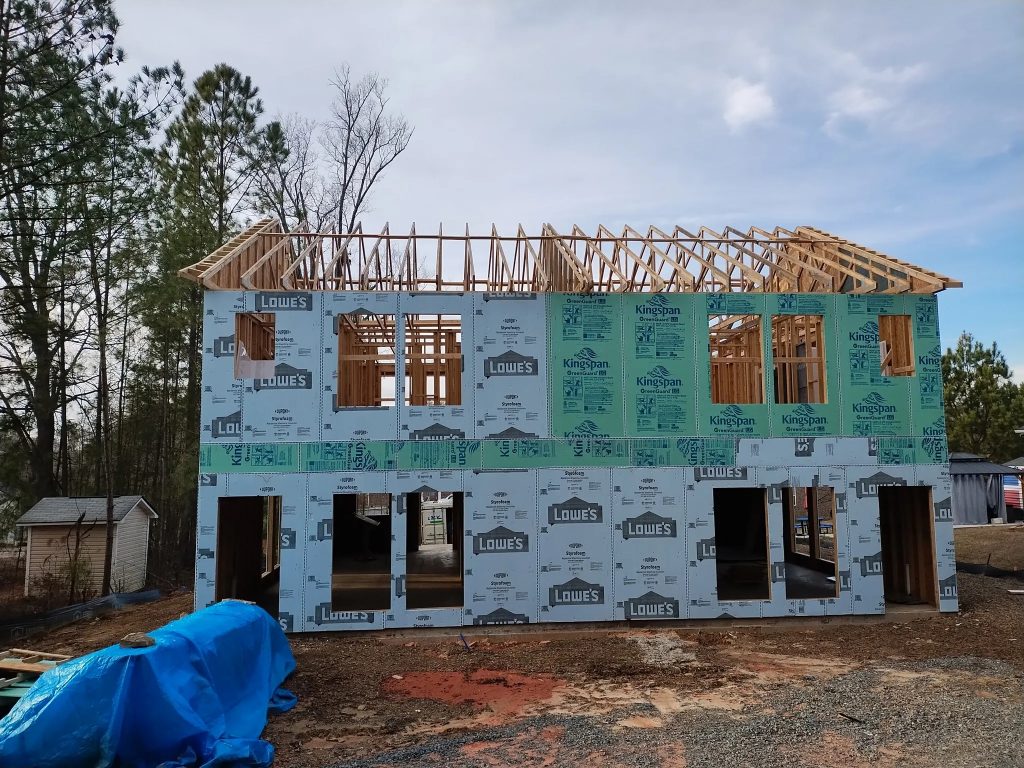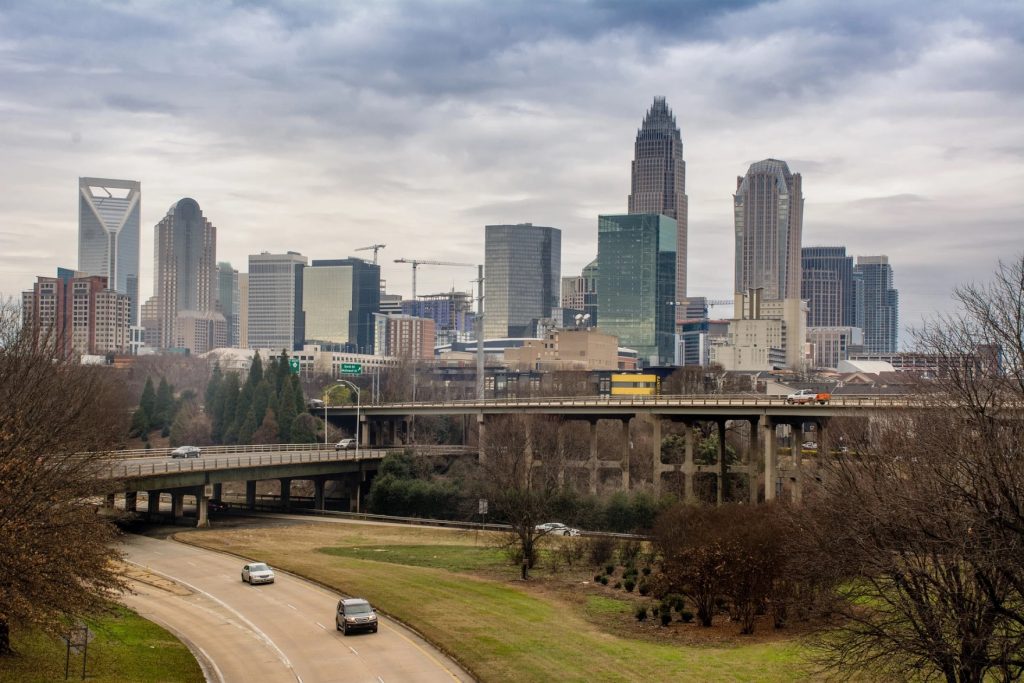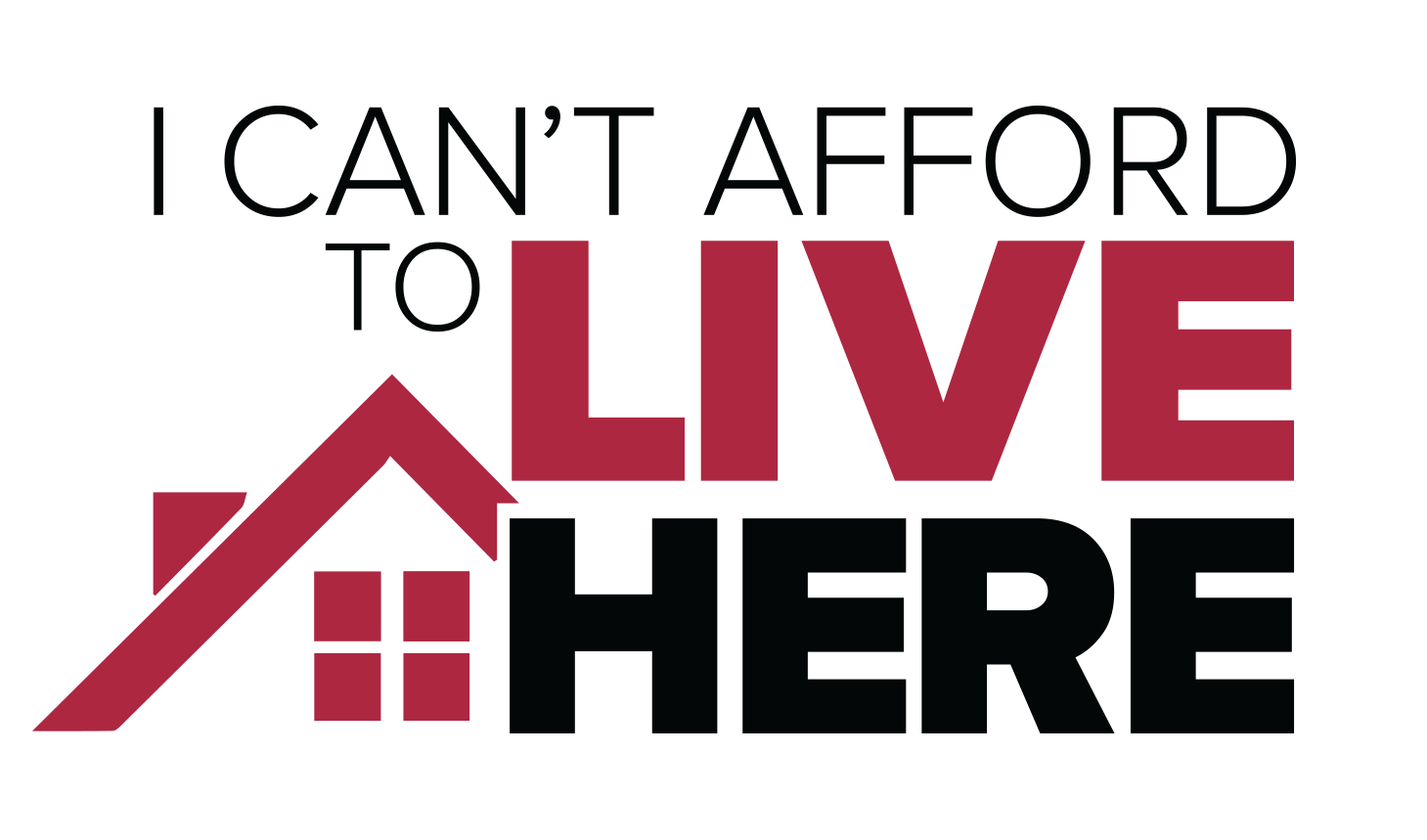
Freddie Martin, someone who is classified as ‘housing insecure,’ calls Beloved Community Village home as he works toward finishing his degree at Metro State University. (Photo Credit: Chris Rudisill)
Freddie Martin, a student of history and anthropology, talks to me outside his home in Denver on a cloudy day in December. He’s a formidable character who grew up in Beaumont, Texas with strong viewpoints on the state of politics in our country. He shares some of his writing with me just outside House 6, his home at the Beloved Community Village. “I’ve been through quite a bit in my time,” says Martin. “I’ve been housing insecure for over a decade.”
Martin has been a Villager since March 2018, after meeting Cilla Wolf, a former Beloved Community Village resident, on the campus of Metro State University. Being here has given him the chance to finish his degrees.
The Colorado Village Collaborative exists to create and operate transformational housing communities for people exiting homelessness and entering housing. The fight for decriminalization of homelessness and finding housing solutions has been a long one in Denver. Like Charlotte, the city has seen rapid growth over the past two decades. The median home value has risen from $222,550 to $409,900 in the past 10 years. Average rent for a one-bedroom apartment is $1,423 a month. To afford an apartment within 10 miles of metro Denver, an individual making minimum wage salary, which is $11.10/hour, four dollars more than that of North Carolina, must work 130 hours a week, four weeks a month. People are regularly pushed out of areas as gentrification sweeps in leaving limited affordable housing options close to jobs, food and services.
 Denver Homeless Out Loud started building tiny homes in 2013 following the passage of an Unauthorized Camping Ban ordinance which made it illegal for those experiencing homelessness to sleep on public property. When the group organized the voices of those living on the streets, one of the ideas that quickly popped up was the idea of creating a tiny home village. “It was something people on the street specifically wanted,” says Cole Chandler. “We didn’t dream this up in a lab somewhere.” Chandler, who cites his faith as a leading factor in his work, is a community organizer and serves as the co-director of the Colorado Village Collaborative. (Note: In December, the U.S. Supreme Court declined to hear a case in which the U.S. Court of Appeals for the Ninth Circuit struck down a camping ban in Boise, Idaho, and citing that case, a Denver County judge ruled that the city’s urban camping ban is unconstitutional, amounting to cruel and unusual punishment.)
Denver Homeless Out Loud started building tiny homes in 2013 following the passage of an Unauthorized Camping Ban ordinance which made it illegal for those experiencing homelessness to sleep on public property. When the group organized the voices of those living on the streets, one of the ideas that quickly popped up was the idea of creating a tiny home village. “It was something people on the street specifically wanted,” says Cole Chandler. “We didn’t dream this up in a lab somewhere.” Chandler, who cites his faith as a leading factor in his work, is a community organizer and serves as the co-director of the Colorado Village Collaborative. (Note: In December, the U.S. Supreme Court declined to hear a case in which the U.S. Court of Appeals for the Ninth Circuit struck down a camping ban in Boise, Idaho, and citing that case, a Denver County judge ruled that the city’s urban camping ban is unconstitutional, amounting to cruel and unusual punishment.)

Co-Director Cole Chandler. (Photo Credit: Colorado Village Collaborative)
In 2015, Denver Homeless Out Loud staged a direct action in Sustainability Park, a historic low-income housing space that sat vacant for over 20 years after housing was torn down by the city. They quickly set up 10 tiny homes. Within 12 hours, police raided the area, arresting 10 people and destroying the site. In 2016, the Alternative Solutions Advocacy Project, a broader coalition, was created under the leadership of the Interfaith Alliance of Colorado. “We started to get some traction,” says Chandler. The coalition brought together advocates, service providers, people on the street, academics, the faith community and business leaders. The Urban Land Conservancy offered a piece of land and the Colorado Village Collaborative (CVC) was formed. In July 2017, Beloved Community Village, the city’s first tiny home community, opened with its first 11 homes built through grassroots organizing and over 400 volunteers.
The city’s zoning and permitting laws created barriers for the project. Most of the city is restricted to single-unit or two-unit zoning, and the tiny homes at Beloved Community Village don’t have running water or sewer, preventing them from existing under standard building codes. “It’s not what the city would consider a dwelling unit,” says Chandler. The 8 by 12-foot dormitory-style units were built in a hub-and-spoke community design with a central shower facility. The village currently uses portable toilets and is building a new community building that will provide lockers, private bathrooms with showers, a kitchen and eating area.
A widely-accepted industry definition identifies a tiny house as a dwelling that is 500 square feet or less and they’ve been made popular by HGTV, while providing options for affordable housing throughout the country. Beloved Community Village is adding another nine units, bringing the project to a total of 20 homes. The village and infrastructure costs approximately $600,000 in the city of Denver, much more affordable than a traditional shelter. According to Aldo’s Restoration and Construction in Charlotte, a local tiny home builder, the average price of a tiny home is $25,000, approximately 10 times cheaper than the average price of building a typical home.

Some of the housing units at Beloved Community Village in Denver, Colo. (Photo Credit: Colorado Village Collaborative)
In 2018, Charlotte City Council weighed the options for tiny houses prompted by the proposed Keyo Park West development in the Coulwood neighborhood. According to the Charlotte Business Journal, the project, which later fell through and resulted in several lawsuits, prompted a discussion by city planning staff about how tiny homes would fit within current local and state building and zoning codes, including whether a new overlay district for neighborhood conservation would be pursued — a motion that ultimately was tabled.
In a Transportation & Planning Committee meeting on Feb. 19, 2018, Charlotte City Council Member Tariq Bakhari (District 6) stated “So the crux of the decision of this Committee and ultimately the full Council needs to come to is do we want to change anything that would prohibit or put some requirements around this, and I assume that would lead to what are the reasons why? Obviously affordable house (sic) is a big deal, and this seems like a very innovative solution for it. In what scenarios of affordable housing may we want to make this easier to do?”
The Beloved Community Village was made possible by an ordinance passed by Denver City Council, carving out a space in the city’s existing zoning and building codes. The update allowed for tiny home village permits that last up to 180 days, with a chance for renewal. Leadership in Community Planning & Development “believed in the vision and was really willing to work to figure out a solution to make this viable,” says Polly Kyle, senior aide for Denver City Councilwoman Robin Kniech.

A sign at Beloved Community Village. (Photo Credit: Chris Rudisill)
In Denver, Chandler, Kniech and others sought ways to activate vacant city land or land that was already scheduled for development. Both land acquisition and land availability were cited challenges in a 2016 Charlotte-Mecklenburg Strategies for Affordable Housing Development report. Land acquisition costs were cited as one of the largest barriers for building affordable housing — especially in higher-income communities and along transit corridors. It can also be complicated to find opportunity for multifamily properties in neighborhoods traditionally zoned for single-family. Eight-four percent of residential land in Charlotte is zoned for single-family homes, but there’s growing momentum that could bring changes allowing for more options in the city’s traditional neighborhoods.
The tiny homes at Beloved Community Village are built on jack stands, previously cement foundation blocks, so they are easy to move. Vacant land that has been cleared for future development provides an opportunity to utilize the land while necessary planning and permitting is completed. The former site of CVC’s first project was developed into a 16-story market-rate apartment building causing them to move to its current location in Globeville, which is leased by the city to CVC for $10 a year. According to Kyle, the city’s Housing an Inclusive Denver plan is working to build and preserve affordable housing, and the city continues to look at group-living ordinances to allow for more options. A vocal supporter of the project, Councilwoman Kniech pushed forward for a legal path for villages to expand and get services, pulling temporary tiny homes out of the group-living process and passing a new ordinance in October 2019 that would expedite the process. In the last budget cycle, they secured an additional $125,000 in the city budget to connect villagers to permanent housing.
Intentional Community

Program Director Emily Wheeland, Delores Project. (Photo Credit: Chris Rudisill)
The first year of Beloved Community Village was a success for residents and neighbors alike, despite initial community pushback. According to the Barton Institute for Philanthropy and Social Enterprise, “The Village had no negative impacts on the neighborhood and people who live in the village are more stable.”
Daniel Brisson, from Denver University Graduate School of Social Work, describes it as “intentional community.” The Village is built around the concept of shared governance where residents decide who moves in and create rules for the community. In doing so, residents build relationships and skills around a consensus model. Dorothy Leyba is a Village Organizer for CVC and provides individual support to villagers while building community outside the village. She sees how the setup helps build advocacy, personal pride and “leadership skills within the village.” Residents must follow six basic community agreements:
1. No violence.
2. No weapons.
3. No illegal drugs.
4. No discriminatory behavior.
5. No continuously disruptive behavior.
6. Participation in community.
During the first year, five villagers moved out — three into permanent housing and two being expelled for violating the agreements.

Construction at Beloved Community Village. (Photo Credit: Chris Rudisill)
While touring the Beloved Community Village, villagers go about their daily chores. One villager meets with a case manager while sounds of construction on the new community house and additional tiny homes roars ahead. Villagers regularly go in and out of each other’s homes, connecting with each other and truly living as a family unit. “This is one of the most diverse communities that you’ll see,” says Chandler. “People don’t generally opt into diversity. Of the 22 residents we’ve had, three have been transgender and a significant portion of the population have been people of color. It’s people of all ages, people from all over the country and all education levels, too. That’s not what a typical neighborhood looks like.”
One in five transgender people in the United States has been discriminated against when seeking a home, and more than one in 10 have been evicted from their homes because of their gender identity. Homelessness is a critical issue with one in five transgender people experiencing homelessness at some point in their lives, in large part because of familial or employment discrimination. One of the community partners of CVC is the Delores Project, which houses adult women and transgender people that are facing homelessness. The shelter is part of a larger project in partnership with the affordable housing developer Rocky Mountain Communities, which together own and operate an entire city block built with Federal Low-Income Housing Tax Credits in Arroyo Village. The block includes the shelter as well as 35 units of low-income permanent supportive housing and 95 units of affordable housing for individuals and families in the workforce. The space is specifically designed for people with trauma history in mind, with large southern facing windows, plants, wood features, and soothing colors and textiles. Delores Project offers case management, life skills training, housing stability programming and emergency beds for people being released from incarceration. The goal is to move people from homelessness to stable housing. “Within their first two visits, they’re writing up a housing plan,” says Emily Wheeland, program director at Delores Project.
Former Beloved Community Village resident Silla Wolfe interviewed in The Right to Rest, a film by Sarah Megyesy and Guillermo Roques.
Wolfe is one of 3 transgender residents to have lived at Beloved Community Village
The area around the Delores Project is quickly gentrifying and it is the only overnight shelter in the city that is open and celebratory of transgender individuals, serving anyone that identifies along the transgender spectrum and including features like single-use restrooms, private shower stalls and changing facilities. “About 10 percent of the people we see self-identify as trans,” says Wheeland. “We see a lot of folks that come from other states that we’re the nearest big city to the west, that are coming from smaller towns or states that might not be as trans-friendly as Denver is.”
A Place To Call Home

Outside the Beloved Community Village in Denver, Colo. This community provides its residents with a chance to become more housing stable as they work toward longer-range goals. (Photo Credit: Chris Rudisill)
“I understand what it’s like for people to have something they can call their own — to have a key, and to have that security and that sense of empowerment, really means a lot to people,” says Freddie Martin. “It really makes a big difference. I never really felt like a real part of a community before. People here are amazingly open and caring and honest. The people here have been through things. They understand what suffering is. I’ve always had people in my life that don’t necessarily understand suffering, so it’s hard for them to contend with people who are suffering, but that’s one of the wonderful things about this place. People have been through things, and they’re grateful for what they have.”
In theory, Beloved Community Village can be a unique stepping stone for people utilizing shelter services at places like the Delores Project before moving on to more permanent housing, be it shared apartments or affordable housing. “We have a lot to learn about how to make this the most successful place it can be,” says Chandler. “This is a different emergent kind of thing. This is not a silver bullet. This is what happens when a community comes together to address a big problem.”
“One of the things that came out of that first study was we took a vacant lot that was right across the street from a light-rail station — a place with a lot of activity and no eyes on the street” says Chandler discussing a study by the Denver University’s Burns Center on Poverty and Homelessness. “We put the village there, and crime actually decreased in the direct blocks surrounding it. That’s not something that people expect, but activating a vacant lot is a valuable thing.”
“I see the potential of this village. I want to see it expand. I want to see more villages. It’s not permanent housing, but it is a stepping stone for our villagers to get permanent housing.”

Delores Project in Denver, Colo. (Photo Credit: Chris Rudisill)
Colorado Village Collaborative is working on creating a transgender-inclusive women’s village and will start a community engagement plan to find the right site this year. They would like to build 15 additional homes with a shared community space like the new one being constructed at Beloved Community. Chandler brings up the idea of tiny home villages in every city council district across Denver. On a consistent basis, the city has around 600 people living in unsheltered homelessness on any given night. “Could we essentially achieve a functional zero in terms of that population by offering a humane solution that is scattered around the city.”
Wheeland from the Delores Project talks about changing the entire philosophy of serving those who face homelessness. By providing housing first and then continuing services like community support, mental health and life skills training after they have some type of housing stability will allow for greater impact in the community. “The ultimate goal is housing, right? So, the pathway sometimes does look like they’re going into a tiny home for two years. They’re going into some transitional housing, before they’re moving into permanent housing.”
“It just starts by building relationships and seeing people that are struggling as our neighbors and as our family, and finding that compassion in our hearts,” says Chandler. “This is a seed of what the world could be.”
You can view the original article here: https://goqnotes.com/64825/big-impact-with-a-small-footprint/












